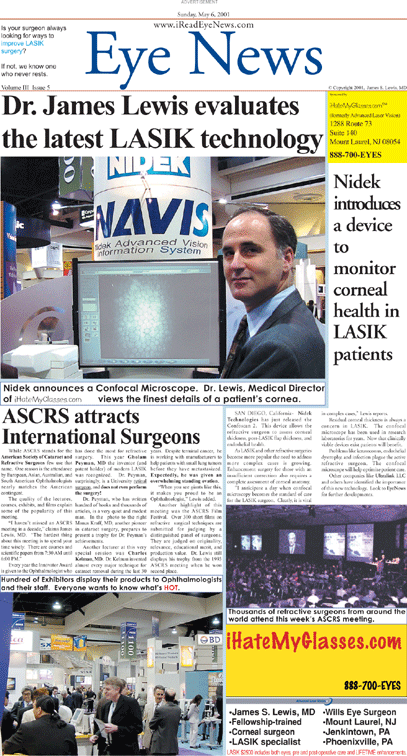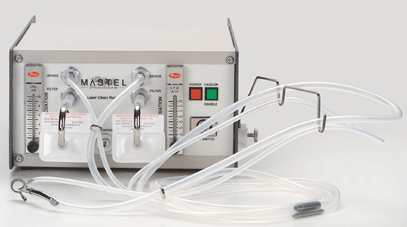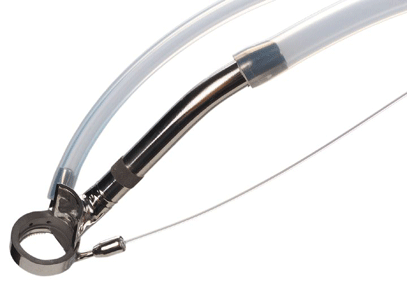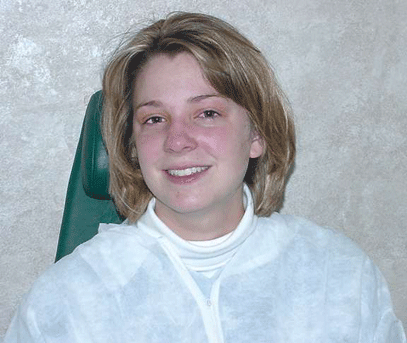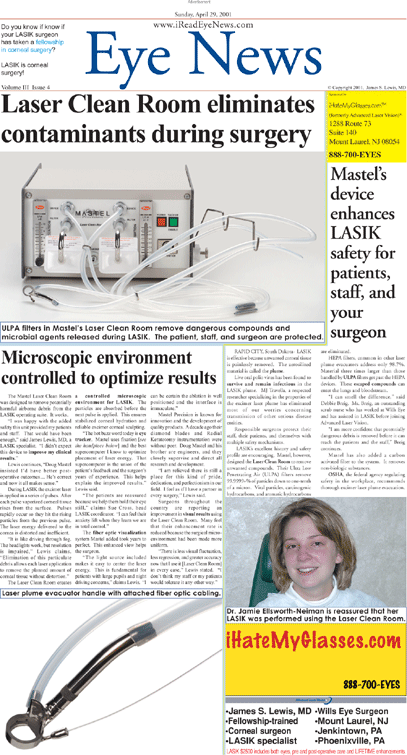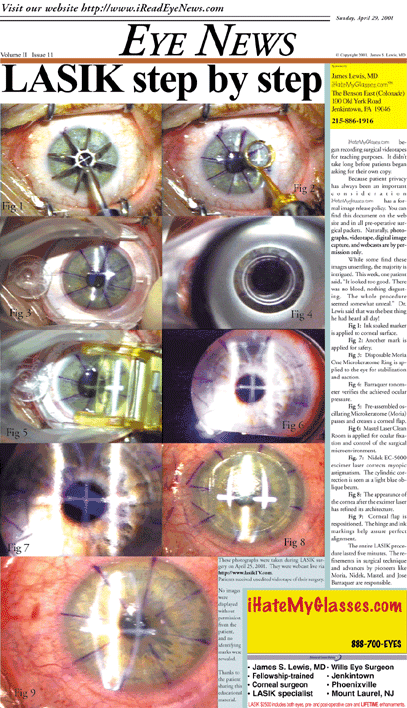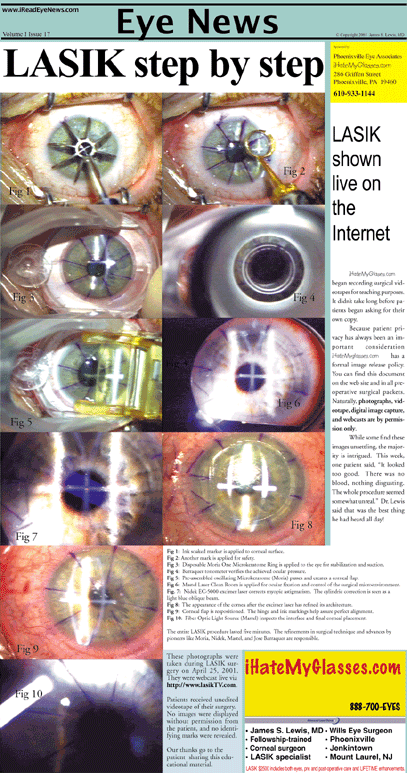Eye News Volume I Issue 18

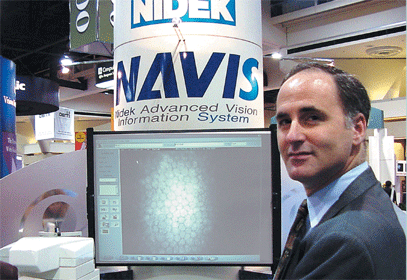
The quality of the lectures, courses, exhibits, and films explain some of the popularity of this meeting.
“I haven’t missed an ASCRS meeting in a decade,” claims James Lewis, MD. “The hardest thing about this meeting is to spend your time wisely. There are courses and scientific papers from 7:30 AM until 6:00 PM.”
Every year the Innovator Award is given to the Ophthalmologist who has done the most for refractive surgery. This year Gholam Peyman, MD the inventor (and patent holder) of modern LASIK was recognized. Dr. Peyman, surprisingly, is a University retinal surgeon, and does not even perform the surgery!
Dr. Peyman, who has written hundred of books and thousands of articles, is a very quiet and modest man. In the photo to the right Manus Kraff, MD, another pioneer in cataract surgery, prepares to present a trophy for Dr. Peyman’s achievements.
Another lecturer at this very special session was Charles Kelman, MD. Dr. Kelman invented almost every major technique for cataract removal during the last 30 years. Despite terminal cancer, he is working with manufacturers to help patients with small lung tumors before they have metastasized. Expectedly, he was given an overwhelming standing ovation.
“When you see giants like this, it makes you proud to be an Ophthalmologist,” Lewis added.
Another highlight of this meeting was the ASCRS Film Festival. Over 300 short films on refractive surgical techniques are submitted for judging by a distinguished panel of surgeons. They are judged on originality, relevance, educational merit, and production value. Dr. Lewis still displays his trophy from the 1993 ASCRS meeting when he won second place.
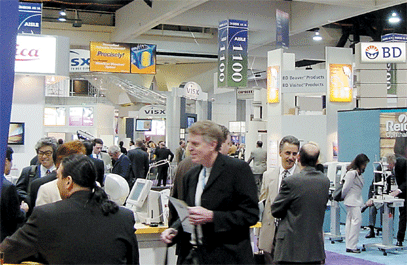
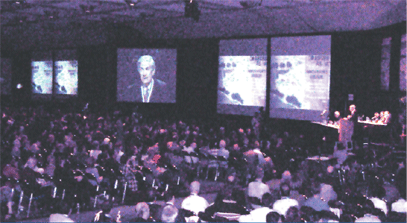
device to monitor corneal health in LASIK patients
As LASIK and other refractive surgeries become more popular the need to address more complex cases is growing. Enhancement surgery for those with an insufficient correction also requires a complete assessment of corneal anatomy.
“I anticipate a day when confocal microscopy becomes the standard of care for the LASIK surgeon. Clearly, it is vital in complex cases,” Lewis reports.
Residual corneal thickness is always a concern in LASIK. The confocal microscope has been used in research laboratories for years. Now that clinically viable devices exist patients will benefit.
Problems like keratoconus, endothelial dystrophy, and infection plague the active refractive surgeon. The confocal microscope will help optimize patient care.
Other companies like Ultralink LLC and others have identified the importance of this new technology. Look to EyeNews for further developments.
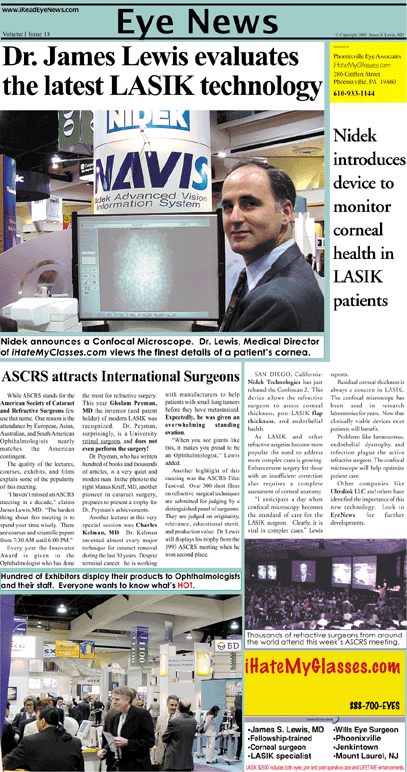
Dr. Lewis specializes in a variety of sophisticated refractive vision correction procedures. At his Philadelphia LASIK offices, patients can receive LASIK eye surgery, Epi-LASIK and ICLs. The latter procedure involves placement of corrective collamer lens implant in the eye. Dr. Lewis has many years’ experience performing this procedure and is highly regarded as a foremost Philadelphia Visian ICL expert.

